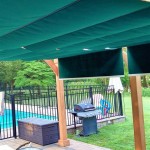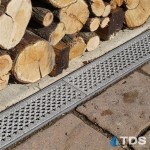Eliminating Flies From Your Patios In Florida
Florida's warm, humid climate provides an ideal breeding ground for flies. These ubiquitous pests can quickly turn a pleasant patio experience into an unbearable nuisance. Effective fly control requires understanding their life cycle, identifying attractants, and implementing a multi-faceted approach that combines sanitation, exclusion, and targeted treatment.
Understanding Fly Behavior and Life Cycle
Before implementing control measures, it is crucial to understand the biology and behavior of flies. Flies undergo complete metamorphosis, progressing through egg, larval (maggot), pupal, and adult stages. The entire life cycle can be completed in as little as a week under optimal conditions, contributing to rapid population growth. Female flies can lay hundreds of eggs, typically in decaying organic matter such as garbage, animal waste, and rotting vegetation. The larvae feed on this material, developing through several instars before pupating. Adult flies are attracted to various substances, including food scraps, sugary drinks, and animal excrement. Identifying the specific fly species involved is helpful, as some flies are more attracted to certain substances than others.
House flies, for example, are common patio pests, attracted to decaying organic matter and food refuse. Blow flies are often associated with carrion and pet waste. Fruit flies, as the name suggests, are drawn to ripened or fermenting fruits and vegetables. Knowing the source of attraction dictates the type of control strategies that prove most effective. For instance, identifying breeding sites like pet waste and eliminating them will reduce the fly population more effectively than simply spraying insecticide on adult flies.
Flies are also attracted to light, particularly ultraviolet light. This explains why they tend to congregate near porch lights and other illuminated areas. Their ability to fly allows them to travel considerable distances to reach food sources and breeding locations, making control a challenge. They also rely on air currents and wind to disperse, which is why a proactive approach is often needed to prevent flies from becoming established on a patio area.
Implementing Sanitation Measures
Sanitation is the cornerstone of any successful fly control program. Removing potential breeding sites and food sources is essential for reducing fly populations. This involves a rigorous and consistent cleaning regimen for the patio and surrounding areas.
Garbage cans should be equipped with tight-fitting lids and emptied regularly, especially during warmer months. Food scraps and other organic waste should be properly bagged and disposed of promptly. Regularly cleaning garbage cans with disinfectant will help eliminate residual odors that attract flies. Compost bins should be located away from the patio and properly maintained to prevent fly breeding. Keep in mind that even small amounts of decaying organic matter, such as spilled food or drink, can attract flies. Promptly cleaning up spills is critical.
Pet waste is a major fly attractant, particularly for blow flies. Regularly scooping pet waste from the yard and disposing of it properly is vital for reducing fly populations. Bird feeders can also attract flies, especially if spilled birdseed accumulates beneath the feeder. Cleaning up spilled seed and regularly cleaning the feeder itself can help prevent fly infestations. Consider that any standing water can be a breeding site for certain types of flies, such as drain flies. Ensure proper drainage and eliminate any standing water sources, such as clogged gutters or puddles.
Effective sanitation also involves maintaining surrounding vegetation. Overgrown grass and shrubs can provide shelter for flies and create humid conditions that are conducive to breeding. Regular mowing and pruning will help reduce fly habitat. Consider the plants you have near your patio. Some plants, like certain herbs, can naturally repel flies. Strategic placement of these plants could offer a natural deterrent.
Utilizing Exclusion Techniques
Exclusion techniques aim to physically prevent flies from entering the patio area. This involves creating barriers that prevent flies from accessing the space and its contents.
Screened enclosures are one effective option. Screening off the entire patio with fine mesh screens can provide a physical barrier against flies and other insects. This option can be expensive, but provides comprehensive protection and enables enjoyment of the patio year-round. Screen doors should be self-closing and tightly fitted to prevent flies from entering the house or patio area. Repair any tears or holes in existing screens promptly. Weather stripping around doors and windows can also help prevent flies from entering the house, thereby reducing the number of flies that gain access to the patio.
Air curtains can be installed above doorways, creating a stream of air that deters flies from entering. These are particularly effective for preventing flies from entering from the inside of the house out to the patio. Fly traps are another exclusion method; both sticky traps and light traps can be used to capture flies. Sticky traps are coated with an adhesive substance that traps flies upon contact. Light traps use ultraviolet light to attract flies, which are then electrocuted or trapped. Placement of these traps is critical; they should be located away from food preparation areas and out of reach of children and pets. Always follow the manufacturer's instructions when using fly traps.
Consider the prevailing wind direction. If possible, position your patio furniture in a location that is sheltered from the wind, as this can reduce the number of flies that are blown into the area. Using fans can also help deter flies, as they are sensitive to air currents. Even a gentle breeze from a fan can make it difficult for flies to land and feed.
Implementing Targeted Treatment Options
When sanitation and exclusion methods are insufficient, targeted treatment options may be necessary to control fly populations. These include the use of insecticides, baits, and other control products.
Insecticidal sprays can be used to treat areas where flies congregate, such as around garbage cans, pet waste areas, and other potential breeding sites. Choose insecticides that are specifically labeled for fly control and follow the label instructions carefully. Be sure to consider the safety of pets and children when using insecticides, and avoid spraying near food preparation areas. Residual insecticides can provide long-lasting control, while space sprays provide a quick knockdown of adult flies. Insecticidal baits contain an attractant that lures flies to the bait, which then kills them. These baits can be placed in areas where flies are commonly seen, such as near garbage cans or on window sills. Baits are particularly effective for controlling large fly populations.
Biological control agents, such as parasitic wasps, can be used to control fly larvae. These wasps lay their eggs inside fly pupae, killing the developing flies. Biological control agents are a more environmentally friendly option than chemical insecticides. Insect growth regulators (IGRs) can be used to disrupt the development of fly larvae. IGRs prevent larvae from molting into adults, effectively breaking the fly life cycle. These products are often used in combination with other control methods. Essential oil sprays containing ingredients like peppermint, eucalyptus, or lemongrass may repel flies. These sprays are generally safe for humans and pets, but may need to be applied frequently to maintain their effectiveness.
Professional pest control services can provide comprehensive fly control solutions. Pest control professionals have the knowledge and experience to identify fly species, locate breeding sites, and implement effective control strategies. They can also use specialized equipment and products that are not available to the general public. A crucial note on implementing targeted chemical treatments is to avoid over-reliance. Rotate chemical treatments with other control methods described in order to reduce the risk of resistance. Resistance occurs when flies adapt to the effects of insecticides over time and become less susceptible to them. Consistent assessment of treatment efficacy is crucial. If the original treatment appears ineffective, consider a different method or active ingredient.

How To Keep Bugs Off Your Patio Turf Factory
:max_bytes(150000):strip_icc()/getting-rid-of-flies-outdoor-2656268_FINAL-729e4e7d8cd641dc9ccfaa659d73c98e.png?strip=all)
How To Get Rid Of Flies Outside On Porch Or In Backyard

How Do You Get Rid Of Flies Outside Forbes Home

How To Get Rid Of Flies Aways From Your Patio 4patio Com

How To Get Rid Of Flies On My Porch Your Patio

Flies In Florida A Pesky Predicament And Homeowner Prevention Dave S Pest Control

How To Get Rid Of Flies In The House 11 Quick Solutions

The Best Ways To Get Rid Of Flies In Backyard 15 Ideas

How To Get Rid Of Flies In The House 11 Quick Solutions

How To Get Rid Of Flies Outside Quick Easy Methods
Related Posts








